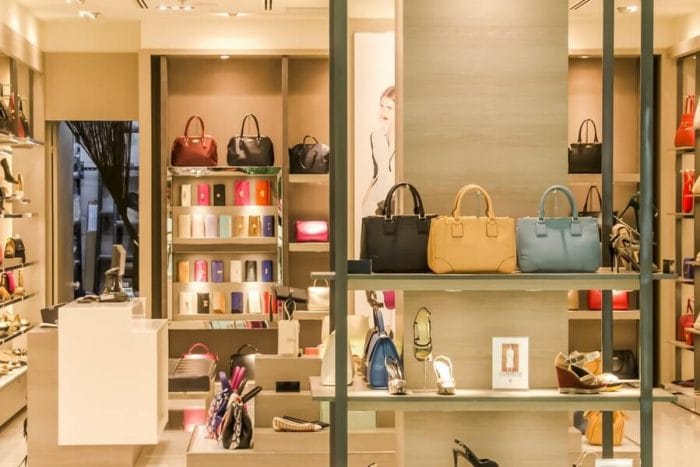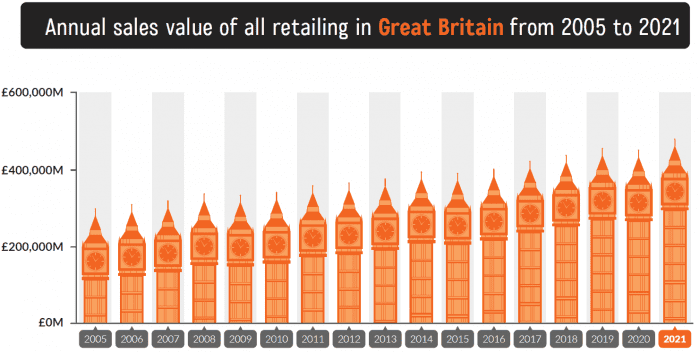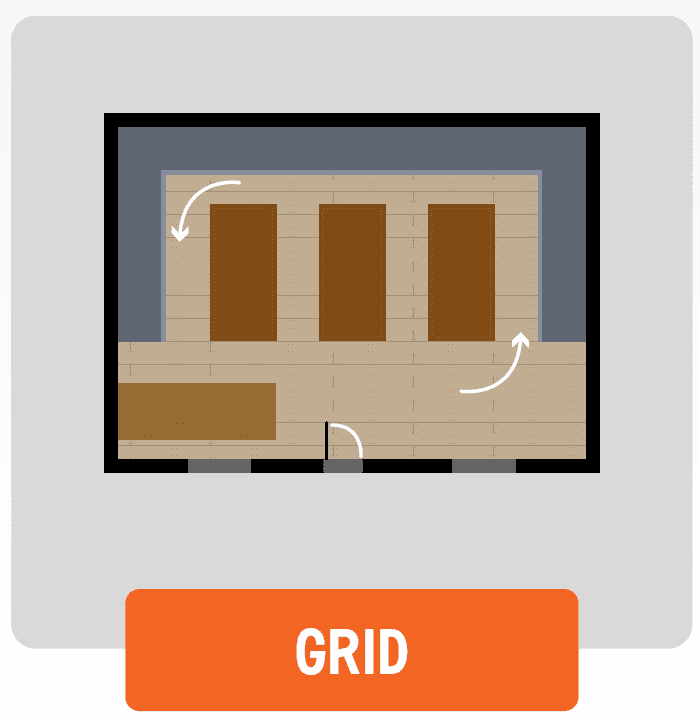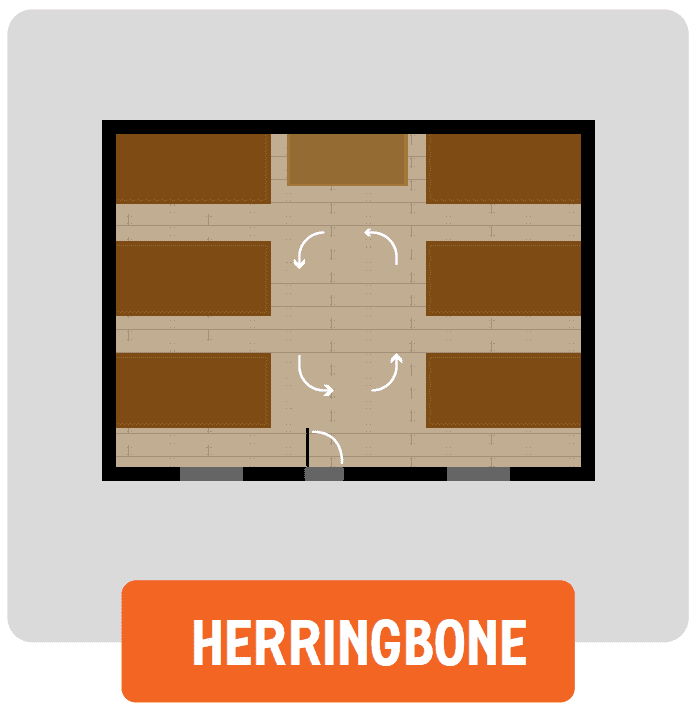The psychological tricks retailers use to make you buy more

Have you ever reached the cashier at a shop, and as you watched them scan your items, realised that you have no idea what you just bought? Or that you really don’t need an extra pair of sunglasses and 5 pairs of socks?
That’s the power of retail psychology in action.
Retail is big business, and the value of retailing has increased astronomically since 2005 as you can see in the chart below.

This ever-increasing value means shops are fighting to be the place where you spend money.
How does retail psychology work?
Retailers have certain tricks that they use to push you along your buying journey, and all of them are tied into simple retail psychology. They know which sounds, smells, colours, sights and emotions influence human behaviour, and they use this knowledge around shops and online to encourage you to buy more of their products.
1. Changing Shop Layouts
Shop layouts are designed to channel customers in certain directions, towards specific products and strategically placed display cabinets. Every shop layout is carefully considered and will include a number of tricks to improve sales, including:
- Changing the environment at the door to snap you out of walking mode, and into shopping mode.
- Placing every day, popular items at the back of the shop.
- Displaying impulse buys near the tills, like batteries, tissues, and snacks.
- Placing a ‘power wall’ of new, popular, and discounted items to the right
Types of Shop Layout
You’ll notice most retail shops follow one of the following layouts, Grid, Racetrack, Free-flow, and Herringbone. This is part of retail psychology.
These are tried and tested for success, so it’s only natural that they are replicated.

Grid layouts are favoured by supermarkets, chemists, and budget retailers. This layout maximises display space, whilst naturally pushing customers around the shop. This is the most traditional shop layout, so has the instant benefit of familiarity, instantly putting shoppers in the mood to spend.

Racetrack, or loop, layouts are designed to get you in and out of a shop quickly. It has a very clear main aisle, and display shelves in the middle and on the walls. This isn’t the most space-efficient layout, but it does maximise exposure to merchandise and leads to more impulse purchases.

Free flow layouts offer a looser, more creative way to display merchandise. You’ll usually see free flow layouts in high-end shops and boutiques, where less-frequent sales of big ticket items matter more than the quantity of products sold. That doesn’t mean you’re safe from impulse buys in these shops, though. Strategically placed ‘value’ items will be dotted around, inviting you to pick them up.

The herringbone layout comprises of side aisles that go all the way to the walls. This isn’t the most convenient layout for customers, as there is no uninterrupted flow around the shop, but it does maximise the amount of stock, that can be displayed.
2. Manipulating Your Senses
Did you know that retail psychology includes changing the atmosphere of shops with lights, smells, and sounds to manipulate your senses? Here are some ways that they do this.
Lighting
When you enter a shop, the first thing you might notice is the lighting. The right lighting can do a lot – especially when it comes to influencing you. When it’s done right, it can:
- Enhance product appeal
- Make you feel happy
- Influence where you go in the shop
Music
Music can make you happy, cry, and it can also make you buy. The type of music shops play is usually intended to make you feel a certain way, depending on how they want you to behave.
Faster, louder music – less time is spent in the shop. Supermarkets usually play loud music to create a sense of urgency and stop people hanging around
Slower, quieter music – more time is spent in the shop. Smaller, luxury shops are likely to play calmer, quieter music to encourage browsing and sales of high-ticket items
Colour Psychology
It’s psychologically proven that colour impacts your emotions. Retailers might use the following colours to influence you.
- Blue – blue is a powerful colour. It’s used by huge brands that we see every day, like Facebook, and Twitter. This strong association with trusted brands makes people automatically link the colour blue with Trust. It can also help to inspire feelings of calmness and tranquillity
- Red – traditionally, we associate red with warnings and danger. Panic is a useful emotion for retailers, it’s the basis of all flash sales and time-limited offers. When we see red in shops, our minds react sharply and impulsively.
- Yellow – this colour is bright, youthful, and fun. It is used in window displays to convey a message of positivity and optimism, inviting you in to browse with an open mind.
- Grey – grey coveys an air of mystery, as well as a sense of neutrality. This neutrality can create a professional, sleek appeal which draws in consumers attention.
Scent Marketing
Retail psychology really has no limits! Scent marketing is strategically using scents to strengthen brand identity and improve sales. Nice smells help customers to form positive memories and associations with different brands. This works especially well with food, but it can work with other industries too.
One study carried out at a Nike store found that customers were 84% more likely to purchase when the room was florally scented, vs. an unscented room.
3. Adapting to new ways of thinking
Shops that don’t ‘get with the times’ almost always lose out. As people become aware of older retail psychology tricks and technology and shopping habits change, retailers must adapt.
We can see this in action when we look at the impact the COVID-19 pandemic had on retail. Online sales became the norm and high street chains were forced to close for months on end. Retailers that didn’t buck up their ideas and adapt to the new way of shopping faced the risk of shutting up shop forever – joining the 17,000 other shops which closed down over this period.
So, what was the solution to this?
Retailers started to put their attention on how they could bring the online experience into their physical shops, including working out the logistics of scrapping the traditional checkout to create a frictionless shopping experience. There has also been a shift to ‘experience-led shopping’, pulling customers in to shops with the promise of experiences they wouldn’t be able to get from shopping online.
They also adapted to suit ongoing trends and listened to the conversations their customers were having online. They noticed a rise in the emphasis of sustainability over the pandemic, which is now a ‘must-have’ for many consumers, rather than a ‘nice-to-have’. The shift in retail pyschology to re-usable, sustainably sourced products has been accelerated.
Will you look for these retail psychology tricks next time you’re shopping?
Once you know about retail psychology tricks, you won’t be able to unsee them! Look next time you’re out shopping – can you spot which shop layout they are using? Which colours do they use in their displays, and why?
Infographic
Check out our infographic below, ‘Why Did You Buy That? The psychological tricks retailers use to make you buy more’

Sources
https://www.statista.com/statistics/287912/retail-total-annual-sales-value-great-britain/
https://thinkmarketingmagazine.com/the-magic-of-window-displays/
https://idealogicbrandlab.com/the-psychology-of-music-consumer-behavior/
https://www.nbcnews.com/business/your-business/meet-scent-marketing-firm-winning-battle-your-nose-n783761
https://retailnext.net/blog/color-psychology-4-ways-store-colors-can-influence-shoppers